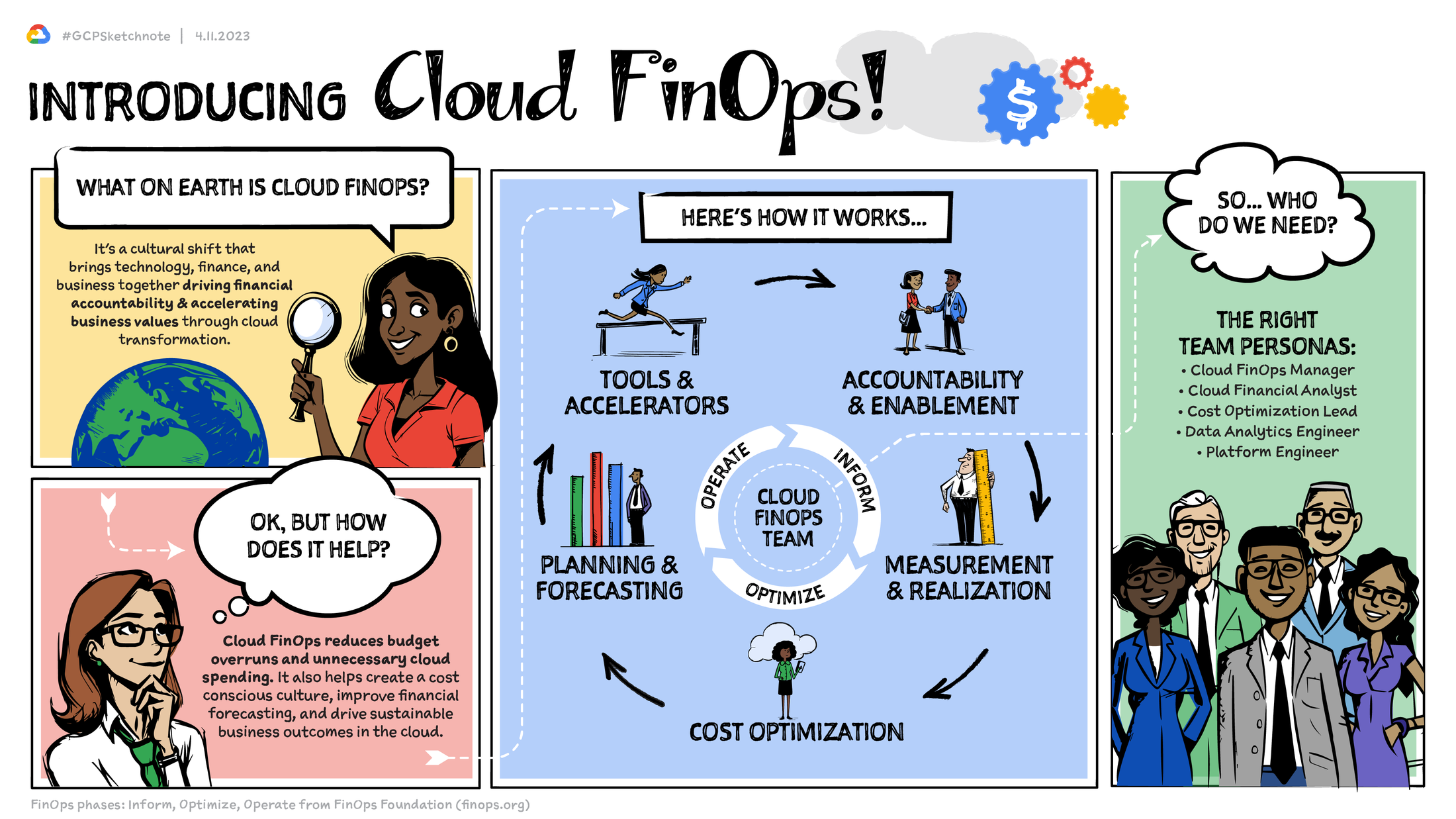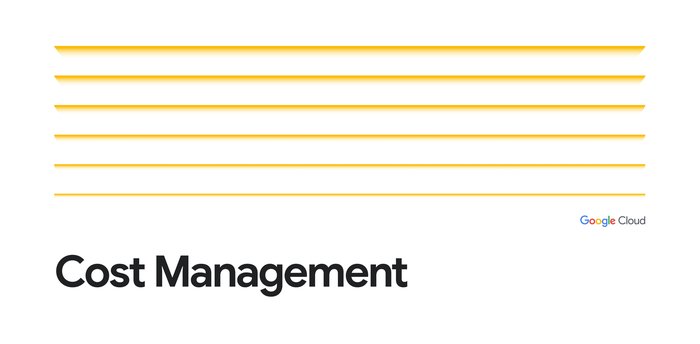FinOps Sketchnotes: Introducing Cloud FinOps
Eric Lam
Head of Cloud FinOps, delta, Google Cloud Consulting
Pathik Sharma
Cloud FinOps Lead, delta, Google Cloud Consulting
Transitioning to the cloud means more than just migrating your workloads or building innovative new apps. While it’s a great first step for your organization, it's just the beginning. To truly maximize the value of your cloud investments requires a fundamental shift in mindset and culture to rethink how your organization operates when imbued with technology.
Your teams need to work together differently as a cloud-ready culture embraces agile iteration, cross-team collaboration, and financial discipline. Each team member needs to understand their role, and how to integrate financial management into their processes. With this shift, you can unlock the cloud's full potential. Your teams can deliver innovation faster, reduce costs, and gain a competitive edge.
It's not easy, but it's worth it. Embracing iterative improvement and cross-functional alignment positions you to continuously maximize value from the cloud. With the right culture, mindset, and technology partner your organization can achieve remarkable results.


If you’ve spent some time on our blogs, you’ve probably read at least a bit about Cloud FinOps. But if you’re unsure what it is, how it works, or how to get started, you’re not alone. And—you’re in luck! Over the next several months, we’ll be featuring Sketch Notes like the one above designed to demystify Cloud FinOps and Google Cloud Platform services
So… what’s Cloud FinOps?
Cloud FinOps is an operational framework and cultural shift that brings technology, finance, and business together to drive financial accountability and accelerate business value realization through cloud transformation. Said differently, it’s a culture shift that promotes cost consciousness and agility in the cloud. Contrary to popular belief, Cloud FinOps isn’t just a practice in saving money. Rather, it’s about getting the most value out of the cloud to drive efficient growth. referred to by the FinOps Foundation.
There are five core building blocks of Cloud FinOps:
- Accountability and enablement: Sets up a cross-functional team, standards, and enablement for managing cloud spend at scale.
- Measurement and realization: Promotes cost transparency, using KPIs and value metrics to drive success.
- Cost optimization: Drives continuous cost optimization effort focusing on resources, pricing, and architecture on cloud.
- Planning and forecasting: Modernizes budgeting, allocation, forecasting, and chargeback methods to allow for cost effective development practices.
- Tools and accelerators: Enables data-driven business decisions with near real-time cost reporting, automation, and tool integration.
With these building blocks, you can define and put the governance, policies, metrics, and tooling in place not only to plan, forecast, manage, and track cloud spending, but also to optimize it.
Implementing Cloud FinOps requires buy-in from key engineering, finance, technology, and leadership teams. It’s a financial-management practice where every business stakeholder is accountable for and works to optimize their own cloud spending.
Oftentimes we get asked who are the key personas in my FinOps team and how large of a team I need. If you are thinking my team should be in some way correlated with the amount of spend we have in the cloud, well.. think again. It's more about the capabilities you are driving. You may have a single person wearing multiple hats (personas) or a group wearing one large hat (that would be funny in the real world, but you get our point!). Having said that, typical team size is 3 to 9 as shown by FinOps Foundation 2022 survey data. Let's dive deep into what these key personas are:
- Cloud FinOps Manager: Provides oversight of the cloud FinOps function to support the business units with cloud initiatives, ensuring alignment to business goals and key objectives
- Cloud FinOps Analyst: Enables business leaders to make sound business decisions with increased visibility into the cost of cloud workloads, resulting in greater accuracy in tracking spend against budgets
- Cost Optimization Lead: Monitors and audits cloud resources to improve operational cost efficiency
- Data Analytics Engineer: Builds and integrates data analytics for cloud financial modeling and reporting
- Platform Engineer: Develops and integrates cloud cost automation tooling into the continuous integration and delivery pipelines
It might seem daunting to implement this at scale within the organization, but don’t worry, we can help you take it one step at a time — crawl, walk and run!
For more ways to get the most value out of your Google Cloud investments, stay tuned for more Cloud FinOps Sketch Notes from Google Cloud.

